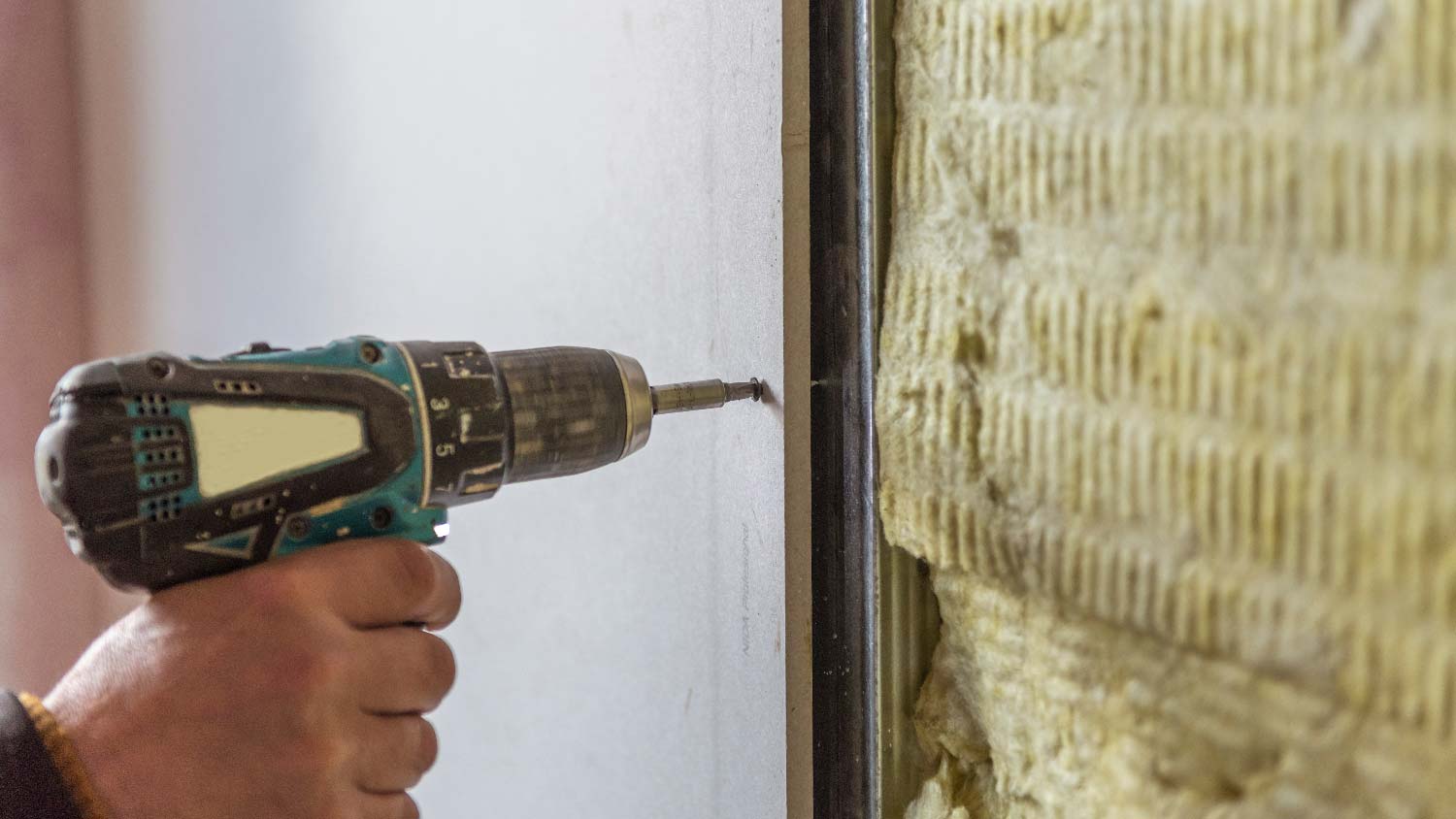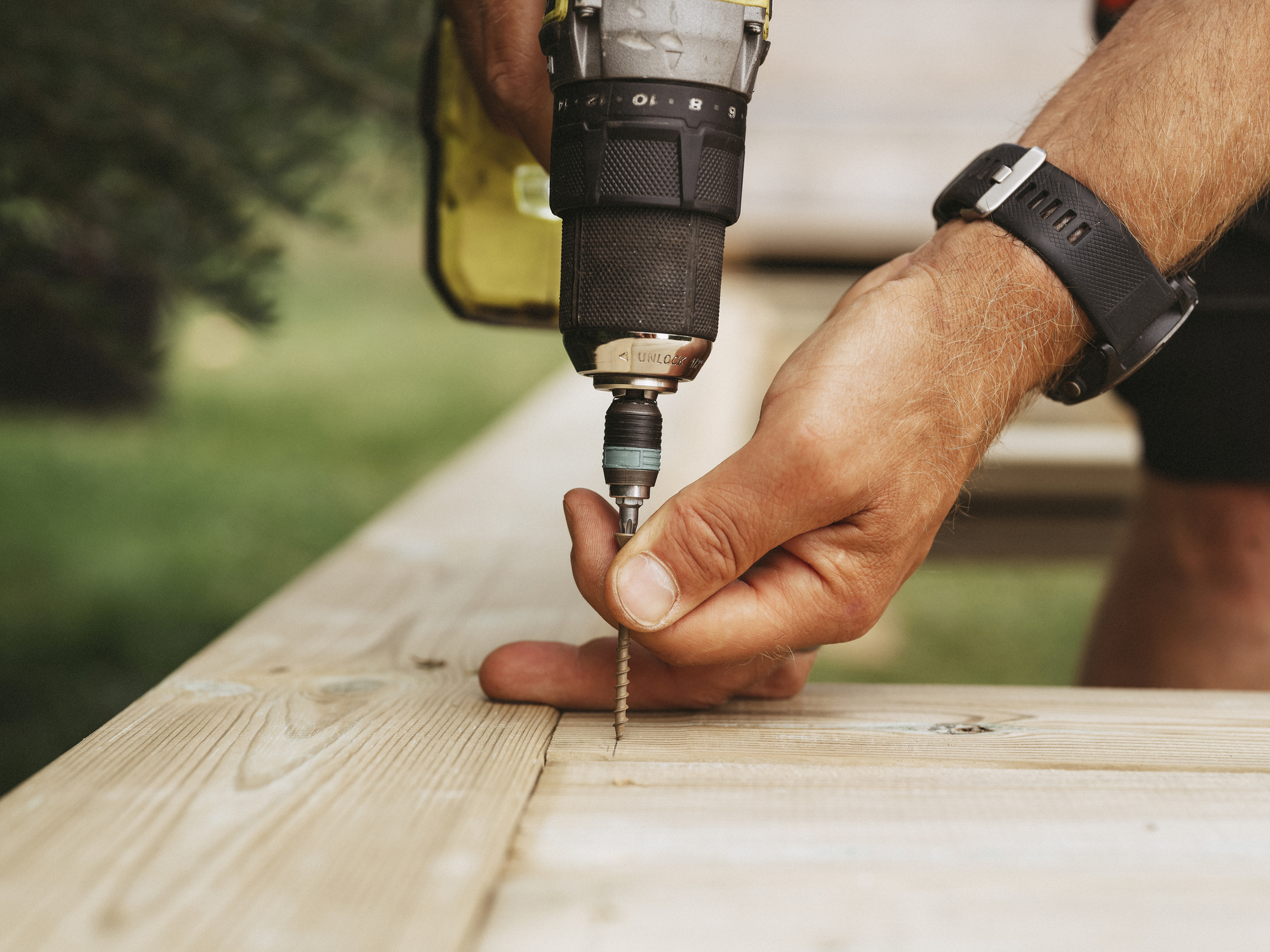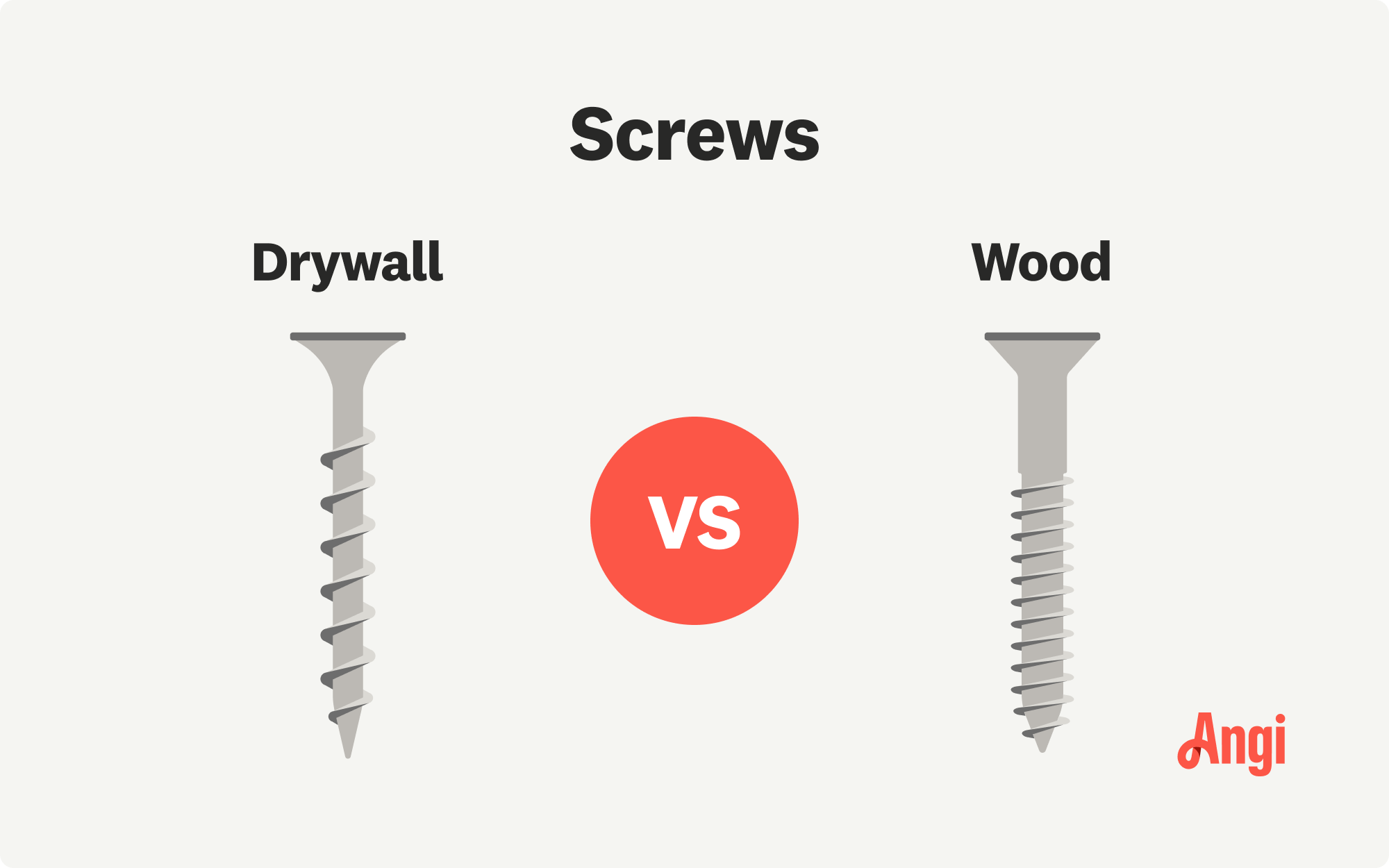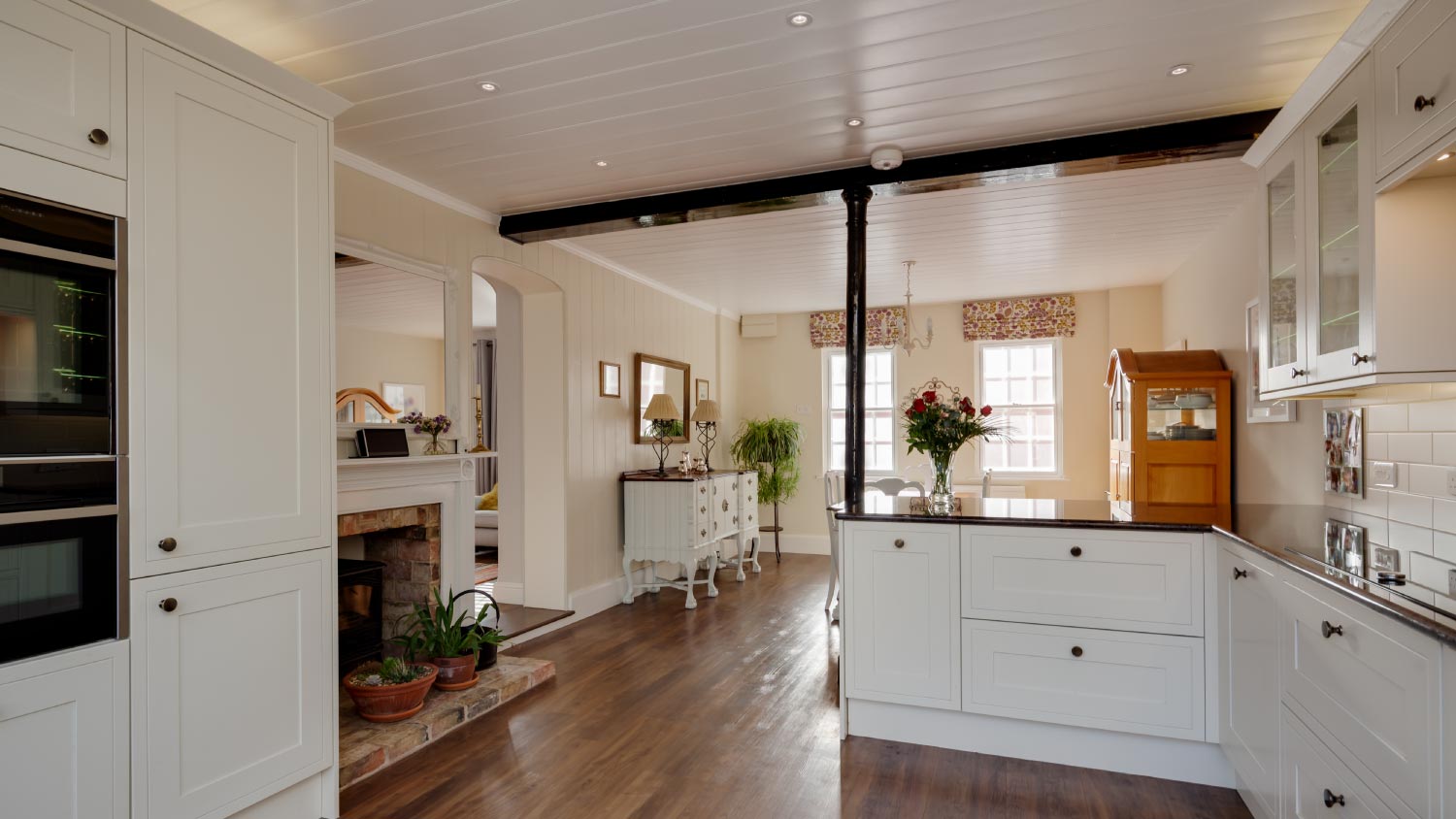
Skim coating drywall is a great alternative to replacement, and is often more affordable. Use this guide to estimate the cost to skim coat walls in your home.
Don’t snap under pressure—use the right screw


Drywall screws are designed to attach drywall panels to framing, while wood screws are ideal for securing two pieces of wood together.
For outdoor projects or moist environments, wood screws are the best choice.
Using wood screws for drywall projects may damage the drywall.
Drywall screws are thinner and more brittle than wood screws.
If you’re taking on a big home improvement project, you’ve probably asked yourself a lot of questions about your tools and materials. When it comes to big construction projects like building a deck or putting up drywall, the little things—like choosing between drywall screws versus wood screws—matter more than you might think.
So, can you use wood screws in drywall? What about using drywall screws to secure wood pieces? While they don’t look all that different, choosing the right screw can make the difference between a pristine finished product and one with glaring flaws.
The biggest difference between wood screws and drywall screws is, as you might expect, how they are meant to be used. Drywall screws are ideal for attaching sheets of drywall to framing. Wood screws, on the other hand, are perfect for fastening wood pieces together tightly.
Due to their purpose, drywall screws are often thinner and more brittle than wood screws. This thin design, along with the special shape of the screw heads, allows wood screws to be used on drywall without causing damage. Wood screws are thicker and stronger for wood applications, and their head shapes allow for a better grip, which is required for wood work.

Drywall screws are specially designed for drywall applications, which is why they are thinner, have a sharp point, are made from hardened steel, and have either fine or coarse threading. Your local drywall installers likely use them to secure panels to both wood and metal studs.
You can choose either the fine thread of the S-type screw for metal framework or the coarse thread of the W-type screw for wood framework. Due to their flat, bugle-shaped heads, drywall screws won’t tear through drywall paper and are ideal for smooth and flush drywall installation.
| Pros | Cons |
|---|---|
| Designed for drywall | Prone to snapping |
| Fine and coarse thread options | Not weight-bearing |
| Won’t tear drywall | May corrode uncoated |
| Self-tapping |
Best for:
Securing drywall to wooden studs
Attaching drywall to metal framing (with fine-thread screws)
Projects where the screw head will be covered with joint compound
Drywall screws’ self-tapping design is one of their biggest pros. This design makes the installation process simpler and eliminates the need for pre-drilling. These screws also have deep threads, letting them hold strong in drywall and reducing the possibility of loosening or sagging down the road.
Above all, though, their specific design for drywall use makes them the best choice for those applications since the drywall is less likely to get damaged during installation.
While perfect for drywall applications, drywall screws aren’t the best choice for use with dense wood. Since they’re thinner and made of hardened steel, they’re less pliable, and drywall screws can snap under force or excess weight. With their bugle-head design, these screws also don’t allow for the best grip when working with hard woods.

Wood screws are specially designed with a sharp point for penetrating hard woods and attaching one piece of wood to another tightly and securely. These screws have a much thicker shaft than drywall screws, and they have coarser threading for a tight grip. Some variations of wood screws are only partially threaded, allowing for an even tighter fit between wood pieces.
| Pros | Cons |
|---|---|
| Designed for wood | Requires pre-drilling |
| Strong and durable | Higher cost |
| Various head styles | May split wood |
| Corrosion-resistant |
Best for:
Woodworking and carpentry projects
Securing wood to wood without adhesives
Applications requiring a strong, load-bearing screw
Wood screws are both durable and versatile. They have a sturdier and thicker design, which means they can handle high-pressure applications without snapping.
Some varieties of wood screws also come with corrosion-resistant coatings, making them a good fit for both indoor and outdoor construction applications. They come in a wide variety of head styles, which allows for variation in grip capabilities or aesthetic preferences.
One downside of using wood screws is that you may need to do some pre-drilling to prevent wood splitting. This is especially true when you’re working with dense wood. Wood screws also tend to cost more than drywall screws, especially when you’re considering those with anti-corrosion coating. Also, their large size and coarse threading can sometimes cause damage when you’re working with softer materials.

How do drywall screws and wood screws measure up head-to-head? Keep in mind that, while each type of screw has its strengths and weaknesses, your ultimate choice comes down to the nature of your specific project.
Wood screws are much stronger than drywall screws and are less likely to snap under pressure. This is especially true when you’re dealing with hardwood. Drywall screws are more brittle and could break during high-stress applications.
Drywall screws aren’t always treated with corrosion-resistant coatings, making them more prone to both corrosion and rust. Wood screws, on the other hand, are often made with galvanized finishes or stainless steel. This makes wood screws a better choice for environments that are exposed to the elements.
The self-tapping feature often seen in drywall screws makes them the winner when it comes to easy use without pre-drilling. When you use wood screws during certain wood applications—like very dense woods—you need to create a pilot hole before inserting the screw. If you don’t, you risk splitting or otherwise damaging the wood.
When it comes to variety in material, length, gauge, and head styles, wood screws are the clear winner. Since their applications are so much more varied than drywall screws, there are a lot more options to choose from to get the perfect fit.
Drywall screws, on the other hand, are a more specialized screw design, so there are limited variations beyond the standard fine or coarse thread options.
A stripped screw is a big aggravation when it happens in the middle of a construction project. Since drywall screws are more brittle, they may strip more easily when overtightened.
Wood screws have much better strip resistance since they’re designed with stronger screw heads that can handle torque.
The obvious winner for wood-on-wood applications is wood screws. Using drywall screws on certain wood applications can lead to stripped or snapped screws or even damaged wood. The design of wood screws allows them to create strong holds between wood pieces.
Fine-threaded drywall screws are great for use with metal framework. Their sharp ends and thin design allow them to really bite into the metal. Wood screws aren’t ideal for this application since their larger size and coarser threading would struggle to penetrate the metal.
The appearance of drywall screw heads isn’t often an issue since they will eventually be hidden under joint compound. However, since wood screws have a wide variety of head styles, including decorative options as well as flat, rounded, and other head shapes, they are a great choice for visible applications where aesthetics are important.
While it’s true that wood screws often cost more than drywall screws, especially if you’re buying in bulk, they are incredibly durable and long-lasting. This may mean that wood screws are more cost-effective overall, even though drywall screws cost less in the short term.
From average costs to expert advice, get all the answers you need to get your job done.

Skim coating drywall is a great alternative to replacement, and is often more affordable. Use this guide to estimate the cost to skim coat walls in your home.

Whether you’re trying to keep noise in or out, soundproofing materials are the way to go. Use this guide to see how much it costs to soundproof a room.

Installing beadboard ceilings is a great DIY project. Learn what to expect cost-wise from this project, whether removing or covering a popcorn ceiling.

Discover the key differences between caulk versus spackle and learn when to use each for your home improvement projects. Get expert tips for a perfect finish.

Can you put drywall over drywall to cover old, damaged or cracked plaster walls? Read our guide to determine if this is the right solution for your walls.

From incorrect mixing to poor weather conditions, there are a few reasons for joint compound not sticking to drywall. Learn how to avoid this drywall problem.